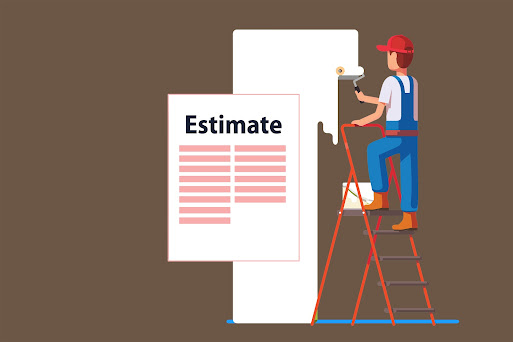If you're considering giving your home a fresh, new look, a fresh coat of interior paint is an excellent way to do it. But before you pick up a paintbrush, it's essential to understand how to estimate the cost to paint the interior of your house accurately. In this guide, we'll break down the key factors to consider when estimating the cost of an interior painting project.
1. Room Size and Layout: The size and layout of a room significantly affect the amount of paint you'll need and, subsequently, the cost. Larger rooms require more paint, while rooms with intricate architectural details like crown molding or wainscoting may demand extra time and materials.
2. Wall Condition: The condition of your walls plays a crucial role in cost estimation. If there are existing holes, cracks, or other imperfections, you may need to invest in surface preparation and repair before applying a fresh coat of paint. Make sure to factor in the cost of patching and priming.
3. Type of Paint: The choice of interior paint also affects your project's cost. Premium brands like Dulux interior paint may be more expensive, but they often provide better coverage and durability, which can save you money in the long run. You'll also need to decide whether you want flat, satin, or semi-gloss paint, which all come at different price points.
4. Number of Coats: In most cases, you'll need at least two coats of paint for proper coverage. This will add to both the cost of paint and the labor involved in the project. Remember, darker colors may require more coats to hide the previous color completely.
5. Paint Color: The interior paint colors you choose can affect the overall cost. Lighter colors tend to require fewer coats to cover existing colors, while darker shades may necessitate extra coats, as mentioned earlier.
6. Trim, Doors, and Ceilings: Don't forget to include the cost of painting trim, doors, and ceilings in your estimate. These areas may require different types of paint and more precise application, so it's crucial to account for them in your budget.
7. Labor Costs: Hiring professional painters will, of course, increase the cost. Labor rates can vary based on your location, the complexity of the project, and the expertise of the painters. It's always a good idea to get multiple quotes from reputable painters to ensure you're getting a fair deal.
8. Additional Materials: Alongside paint, you'll need other materials like brushes, rollers, painter's tape, drop cloths, and more. These items can add up, so include them in your cost estimation.
9. Furniture and Flooring Protection: If you want to protect your furniture and flooring during the painting process, consider the cost of purchasing or renting drop cloths and plastic sheeting.
10. Unexpected Costs: Always leave room in your budget for unforeseen issues, such as structural repairs or extensive surface preparation that wasn't apparent before starting the project.
In conclusion, estimating the cost to paint the interior of your house is a task that requires careful consideration of various factors. It's advisable to plan and budget meticulously to ensure a successful painting project.
For high-quality interior painting services, consider reaching out to A One Korean Painting. They offer professional painting services that can transform your space and bring your vision to life. With their expertise and a keen eye for detail, your interior will look stunning and vibrant.




-min%20(1)23.jpg)




0 Comments